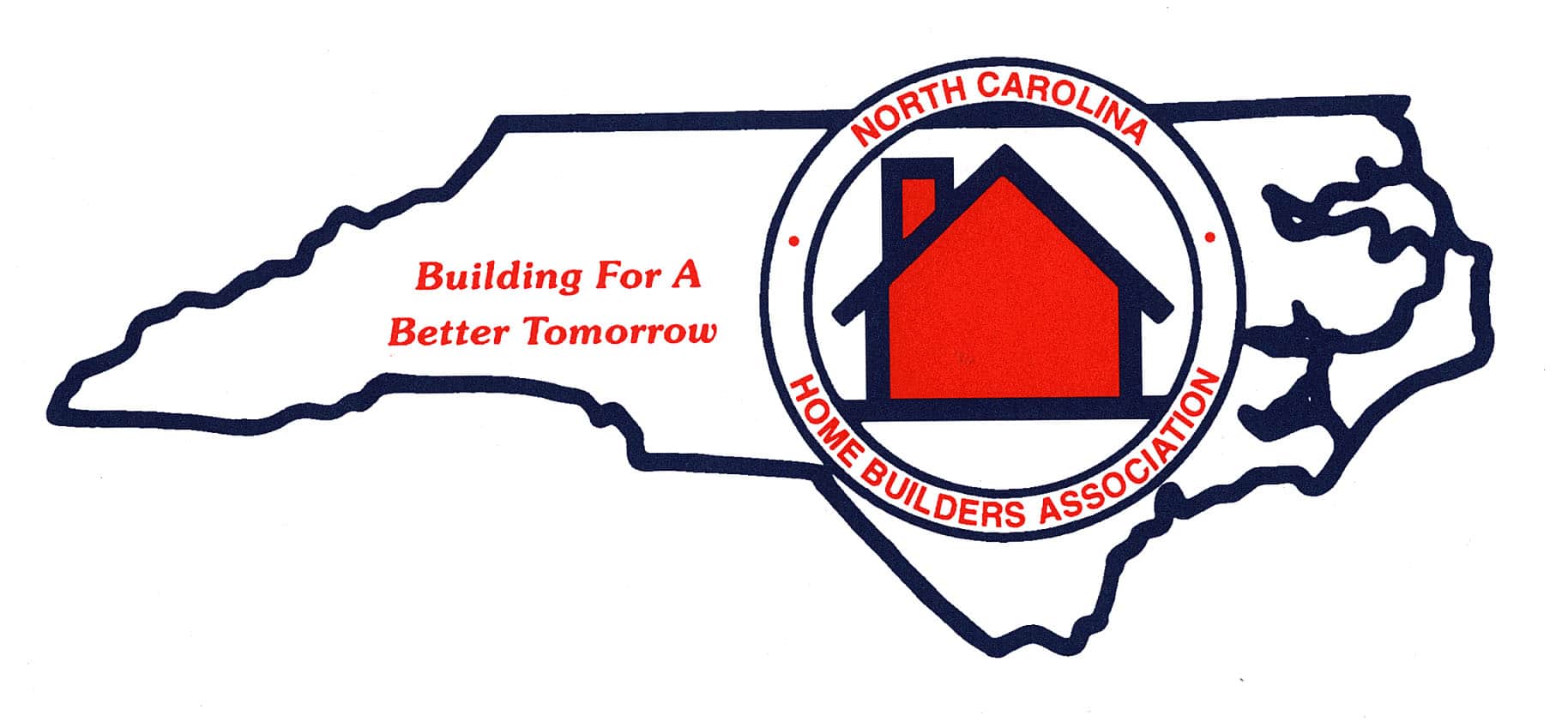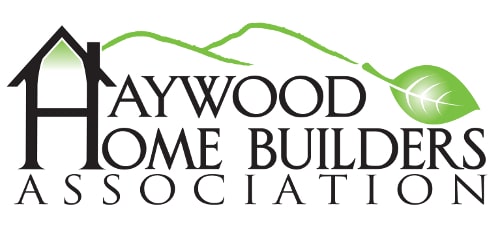The Importance of Chimney Caps
To have or not to have a chimney cap, that is the question.
 Chimney caps are a relatively small investment yet many homeowners wonder if they need one or don’t even think about it all, for that matter. The reality is that this small addition can prevent major issues down the line and, in effect, save the homeowner a substantial amount of money in preventable chimney repair and damage. While it might not not be an immediate need, you can prevent future stress and expenses by having an professional chimney service company properly install chimney caps. Chimney caps help to mitigate moisture, keep animals from coming into the home or making their homes in your chimney and protect your roof from stray embers that could potentially start a house fire.
Chimney caps are a relatively small investment yet many homeowners wonder if they need one or don’t even think about it all, for that matter. The reality is that this small addition can prevent major issues down the line and, in effect, save the homeowner a substantial amount of money in preventable chimney repair and damage. While it might not not be an immediate need, you can prevent future stress and expenses by having an professional chimney service company properly install chimney caps. Chimney caps help to mitigate moisture, keep animals from coming into the home or making their homes in your chimney and protect your roof from stray embers that could potentially start a house fire.
Keep the critters out.
Various birds, rodents and small mammals have been known to take up residence in 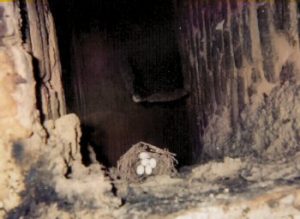 chimneys or use the chimney as a point of entry into your inviting home. In the colder seasons, animals will feel the warmth radiating from your chimney and will make their nest in small spaces near this warmth. In the warmer months birds may find their way into the temporarily dormant chimneys to make their nests. It doesn’t take very long at all for these nests to be completed, and it is easier to prevent this from happening than it is to remove them once it’s happened. Installing a simple chimney cap with mesh siding will prevent these animals from making themselves at home.
chimneys or use the chimney as a point of entry into your inviting home. In the colder seasons, animals will feel the warmth radiating from your chimney and will make their nest in small spaces near this warmth. In the warmer months birds may find their way into the temporarily dormant chimneys to make their nests. It doesn’t take very long at all for these nests to be completed, and it is easier to prevent this from happening than it is to remove them once it’s happened. Installing a simple chimney cap with mesh siding will prevent these animals from making themselves at home.
When birds and squirrels build their nests in chimneys, it is also possible that the space that usually allows smoke and gases to escape the home can get backed up, and that smoke and gas may end up back in the home. This can cause smoke and soot damage and even carbon monoxide poisoning.
Using a chimney cap is the #1 way to keep unwanted animals from staking claim to your chimney.
The problem with moisture.
Moisture can be one of the biggest enemies of a home. Moisture causes mold in homes and deteriorates structures over time.. Chimneys can be dark and dank and moisture can accumulate in the chimneys causing long term damage. Snow and ice is especially damaging to chimneys and can crack the chimney walls and masonry leading to expensive repairs. Why not prevent this all from happening with the small adjustment of having a chimney cap?
The danger of stray embers.
This one is a no-brainer. Embers can travel great distances, but your roof is the closest thing to the chimney so in a wood burning fireplace, stray embers can prove to be a grave danger for homeowners. House fires can be a homeowners worst nightmare and can be easily avoided with the proper installation of a chimney cap.
What are the cons of chimney caps?
Homeowners often question whether chimney caps can cause problems with the chimney draft. The truth is this can happen, but only if the chimney cap is not properly installed. This is why it is important for a professional chimney sweep to perform the job. Homeowners can rest at ease knowing that a well reputed, professional chimney service company has correctly installed their chimney caps. In addition, there are also brands of chimney caps that are specially designed to prevent draft problems. Having a higher quality product as well as professional installation should ensure a smart addition to your home. Be sure to do your research and check reviews of both the product and the chimney sweep so that you know you will be adding value to your home that will protect your home and your peace of mind.
Now what?
Hopefully, this has helped you to determine whether a chimney cap is right for you and you may be ready to purchase one for your home. While your average home improvement store will carry chimney caps for a good price, you will want to make sure that you do not choose a cheaper aluminum chimney cap that will not provide sufficient protection from animals, elements and embers. Check with your local chimney sweep to get the best recommendations. Most chimney sweeps will recommend a quality metal such as copper or stainless steel as they are a higher quality and will last you much longer. Furthermore, if you have a multi-flue chimney, the chimney sweep may recommend that you purchase a large cap that will fit over all of the flues versus multiple smaller chimney caps. Having professional advice and installation will also add to the overall aesthetic of the home.
If you are in the Western North Carolina area, we would love to answer any chimney service questions that you might have. Please feel free to give us a call anytime at 828.400.8731 or email us here.
How Often Should I Clean My Chimney?
The Great Fire
Do you remember the The Great Fire of London? Odds are you weren’t there- it took place over four days in September of 1666. The fire originated in bakery. You see, London was in a drought, most of the buildings were made of wood, and firefighting was in its infancy. This all led to the destruction of over 13,000 homes over a four day period.
What does that have to do with cleaning your chimney in 2017? Well, a lot actually. The bakery that caused the Great Fire was using a chimney, and it probably wasn’t cleaned properly. In the 1600s, chimney sweeps were mostly boys that could climb and fit into a narrow chimney flue. They weren’t nearly as educated and experienced as we are today. If Appalachian Chimney had been around to inspect and clean the bakery’s chimney, there would have been no Great Fire of London in 1666.
The question of how often to clean a chimney can only be determined after a thorough chimney inspection. The question should really be:
How often should I schedule a chimney inspection?
Safety First
Before we go any further, there are a few common sense safety rules that always need to be followed:
- Never leave a fire unattended.
- Install smoke detectors and carbon monoxide detectors around your home.
If you follow these two simple rules, you and your loved ones will be much safer in your home.
Inspection Schedule
 When was your chimney last inspected? Normally, we recommend an inspection every year. Even if you don’t use your chimney very often, it’s a good idea to have Appalachian Chimney Service stop by and check for any structural damage or unwanted chimney guests (birds, squirrels, etc.)
When was your chimney last inspected? Normally, we recommend an inspection every year. Even if you don’t use your chimney very often, it’s a good idea to have Appalachian Chimney Service stop by and check for any structural damage or unwanted chimney guests (birds, squirrels, etc.)
If you recently purchased your home, don’t rely on what the last owner told you. And if you’re renting, check with your landlord. Odds are they will have yearly inspections already scheduled.
How often do you use your chimney?
If you use your chimney frequently, than you probably need to have it cleaned more often.
If you don’t use your chimney that much, than you may not need to get cleaned as frequently.
As a society, we’ve got a lot of things on a schedule: eye appointments, teeth cleanings, even oil changes. Why is it so hard to figure out how often to clean your chimney? Honestly, each chimney is as unique as a snowflake. The first time we evaluate your specific chimney, we’ll be able to recommend an inspection and/or cleaning schedule
Gas Vs Wood
Gas fireplaces are certainly convenient. They’re on in an instant, producing a perfect flame. There’s no messy wood to deal with, and when you’re ready to leave, you can turn it off in an instant. Just because it’s simple doesn’t mean there aren’t hazards. Gas is a relatively ‘clean’ fuel. Over time, though, the flames mixed with the ceramic logs can cause deterioration and build up. It’s worth getting an inspection to make sure everything is clean and safe.
Wood and coal fireplaces are going to produce a lot more build up than a gas fireplace. The creosote released from the burning wood will eventually need to be cleaned out. It’s a good idea to invest in a few chimney cleaning logs and use those throughout your burning season to help loosen the creosote. Just as important is the type of wood you use.
What type of wood should I use?
We went into more detail in a previous post, but the rule of thumb is to use well seasoned hardwood that’s been kept in a dry place. Not only will your fire burn cleaner, but you’ll use less wood as hardwoods produce a higher temperature output than softwoods.
Best time to schedule
Generally speaking, you should schedule an inspection right before the start of the burning season. In Western North Carolina, that means October. Everyone calls us in October, so it’s important to catch sooner so that we can get you on our schedule. Otherwise, we may not be able to get to your chimney until later in the year.
Most of the reputable chimney sweeps in this area will be booked solid when the weather starts to get cooler in October. If you’re a regular customer of ours, we’ve likely already got you in the books for the next scheduled cleaning. If not, give us a call today. We’d love to welcome you to Appalachian Chimney Service Family.
Feel free to call us for any of your chimney questions and/or to schedule a maintenance: (828) 400-8731
Does a Chimney Sweeping Log Work?
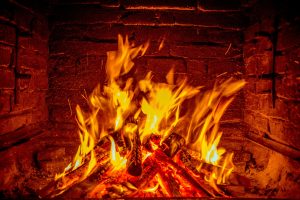 Yes, a chimney sweeping log works, but it doesn’t replace an inspection or professional cleaning. They’re not useless or dangerous. Chimney sweeping logs will remove some of the creosote buildup in chimneys. In fact, the Chimney Safety Institute of America has granted the Creosote Sweeping Log the status of ‘Accepted Product’.
Yes, a chimney sweeping log works, but it doesn’t replace an inspection or professional cleaning. They’re not useless or dangerous. Chimney sweeping logs will remove some of the creosote buildup in chimneys. In fact, the Chimney Safety Institute of America has granted the Creosote Sweeping Log the status of ‘Accepted Product’.
Each chimney that’s in regular use needs to be inspected every year and professionally cleaned. It’s obvious if you consider how a chimney works. Burning wood in a concentrated area will buildup soot, or creosote, in the chimney flue. Over time, that creosote becomes thicker and eventually can cause a major house fire.
That’s a little dramatic, but it is true. Thousands of house fires are caused by uncleaned flues each year.
This is one of those cases when you’re asking yourself , “Do I really need to hire a chimney sweeper?” Absolutely! Hiring a professional chimney sweep to help you maintain your heating and chimney systems can prevent issues from becoming major problems down the road. Of course, there are other tips you can implement to help support your chimney and fireplace maintenance. Hopefully you’re using well seasoned wood that was split between 6 months to a year and has been stored in a cool, dry place. That’s what the Chimney Safety Institute of America recommends you do. Also, avoid using pine as a regular wood source in your wood burning stoves or fireplaces as it creates higher levels of creosote build up.
They also recommend scheduling a yearly inspection by a licensed professional.
Another option is to use a chimney sweeping log, but remember: a chimney sweeping log doesn’t replace annual inspections and professional cleanings.
What exactly is a chimney sweeping log?
A chimney sweeping log (or CSL) is a ‘log’ that you throw in your fireplace, woodstove, or smoke shelf and light on fire. As it burns, additives in the smoke work to loosen the creosote deposits that have built up in the flue over time.
CSLs are relatively inexpensive. You can pick them up at any local hardware store for less than twenty dollars.
Some of those additives can have negative side effects. For instance, some reviewers on Amazon commented that it can add an unpleasant chemical smell to your home. If you or your loved ones are sensitive to these types of smells, we would recommend not using a CSL.
For the most part though, Chimney Sweeping Logs have a good reputation.
A CSL promises to loosen creosote that has built up over time. That’s great, but it’s not the whole picture. It’s important to look at what a CSL can’t do:
A CSL cannot take the place of an annual inspection. It won’t alert you if there are cracks, a bird’s nest, or any structural damage. Chimneys in Western North Carolina aren’t in use all year, and during the warmer months, birds or small woodland creatures might make their home inside a dormant chimney.
Furthermore, structural damage is not always something you can see. We utilize state of the art video scanning to ensure any problematic areas are not missed.
A CSL is not as effective as a mechanical wire brush. Sometimes a wire brush won’t get off all of the creosote. Stage 3 Glaze creosote, which looks just like a shiny glaze on the inside walls of a chimney, requires a chemical compound to loosen it before attempting removal.
Think of a CSL like a toothbrush. You need to brush your teeth twice daily, but you also need to schedule regular ‘inspections’ and cleanings with a dental professional, otherwise you won’t know if you have a cavity or need a root canal. Of course, you don’t want to use a CSL twice daily.
That’s exactly how a CSL operates. Sure, they’re great for removing some of the regular creosote buildup. But, if you haven’t had the chimney swept recently, it’s not going to get off major buildup. Major creosote buildup is what causes chimneys to catch on fire.
It’s imperative that you get your chimney inspected every year. Based on a certified sweeper’s recommendation, you may need to get it cleaned or have some minor repairs scheduled. CSL’s are not bad – but they should be used as one part of a regular chimney maintenance plan.
If it’s been a year or more since you’ve had your chimney inspected, call us at your earliest convenience. Appalachian Chimney Service can inspect, clean, and inform you on any ‘over the counter’ chimney products.
How to Clean a Wood Stove Chimney
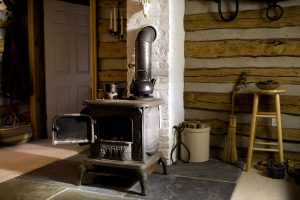
We do not recommend cleaning a wood stove by yourself. A wood stove is usually the main source of heat for a home, and an improper cleaning can render it useless. Call us to schedule an appointment for inspection.
Wood burning stoves have a plethora of benefits. A wood stove adds great ambience to a wintery home blanketed in snow. There are practical benefits as well. They heat large areas quickly, use low cost fuel (wood), and give off lots of warmth with very little waste.
Wood stoves have to be properly maintained and cleaned if you want them heating at their optimal level. More importantly, a dirty stove with soot and creosote buildup can catch fire and possibly burn your house down. Even a clean stove can cause a fire. Be sure to have a multipurpose dry chemical fire extinguisher handy at all times. If there is a fire, always call the fire department before trying to extinguish the fire. Safety is very important around fires. Make sure everyone in your household knows that fires can be dangerous, and to not leave anything combustible near a fire – even if the doors to the stove are closed.
Cleaning a wood stove can be dangerous and labor intensive. We don’t recommend cleaning your stove if you are not a professional. Proper cleaning requires more than reading an article or watching a video online. Problems can arise when cleaning, and if you are not careful, you can cause damage to your stove or pipes. We have outlined the steps and tools needed below, but not as an endorsement for you to do this yourself. This is merely a way of educating you on how it can be done.
Most importantly – do not attempt to clean the stove while it hot. A wood stove can stay warm a very long time after its last use. Spreading hot ashes throughout your home can cause a fire.
Materials:
Old Clothes and Work Gloves
Wear clothes that you don’t mind getting dirty, and work gloves to protect your hands. Soot is tough to clean off of your skin, and the gloves will protect your hands from any scrapes.
Dust Mask and Face Shield
Protect your eyes and mouth! While cleaning, microscopic particles can be released in the air and you shouldn’t be ingesting them.
Mechanical Stove Cleaning Pipe Kit
Stove cleaning pipes come in different sizes. Use one that fits in your pipe perfectly. If you use one that’s too small, you won’t achieve a proper cleaning. If it’s too big, it may get stuck in the pipe and render your stove useless. Check with the manufacturer to get the correct measurement of your pipe before you begin.
Flashlight & mirror
A high beam flashlight is very important for being able to see down the pipe. Often times you’ll need to use a hand mirror to get the correct angle. At Appalachian Chimney, we utilize a sophisticated video camera system, as this provides a more accurate assessment of your pipe.
Drop Cloth (or bucket)
If you remove the pipe entirely, you can position a bucket at one end to catch the debris that comes out while cleaning. Also, use drop cloths around the stove. Cleaning up soot and creosote can be very difficult.
Step by Step Guide to Cleaning a Wood Stove
- Spread a drop cloth in front of the stove, open up the air dampers so that the pipe cleaner can reach every nook and cranny of the pipe. Or, you can disconnect the pipe entirely and remove it to a better location to clean.
- Remove ashes from the stove. You should already be doing this regularly. Be sure to have a noncombustible metal container (with lid) sitting on a non-combustible surface. Once you have transferred the ashes to the metal container, leave them for at least 48 hours, as ashes can stay hot for a long time.
- Climb up the roof and remove the stove pipe. Using a high powered flashlight and mirror, inspect the pipe.
- Using the proper size stove pipe, vigorously scrub up and down removing creosote and soot. You may need to do this several times. Stop to check with your flashlight after a few minutes to ensure you are removing the debris.
- Going back into your house, remove any of the fallen creosote and soot into the noncombustible metal container.ALSO: If you have a Shop Vac that is rated to remove ashes and soot (check the manual!), then use it now to clean up all the small bits.
Like we said before, cleaning a wood stove by yourself is not ideal. Allowing a trained professional to inspect and clean it with the proper tools can extend the life of your stove, and prevent any accidental damages.
What you can do, however, is use dry well seasoned wood. Any moisture in the wood can cause additional deposits in the stove pipe and increase the chances of buildup. You can also use a chimney cleaning log (or CSL) on a regular basis to loosen up that creosote and soot.
Call us first before you risk yourself or your woodstove. We can schedule an inspection, and educate you on proper maintenance and care.
Feel free to call us for any of your chimney questions and/or to schedule a maintenance: (828) 400-8731
What’s the Best Firewood to Burn?
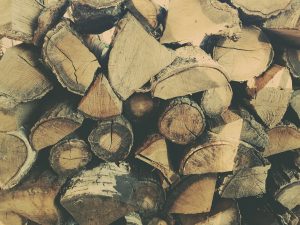
“It’s better to burn out, than to fade away” – Neil Young
Your fireplace has been inspected, cleaned, and now you’re ready to light your first fire. But what type of wood should you burn? There are a lot of choices. You just need to follow a few guidelines to get the best blaze for your buck.
The type of wood is only part of the equation. It should also be cut properly, seasoned well, and stored in a dry area. The proper wood will also burn cleaner and promote less buildup of creosote in the flue. Follow the guidelines below to get the most enjoyment out of your fireplace.
Hardwoods vs Softwoods
Both are fine to burn, but each type offers a different experience. Hardwoods gives off the most heat and burn the longest. It’s sturdy and will burn a lot longer than softwoods. Some common hardwoods oak, maple and cherry.
A very hot, long burning fire may not be what you want for every season though. In early fall and late spring, you may not want a fire that burns as hot. Or, if your fireplace is not your main source of warmth, it may be better to burn a softer wood such as poplar, pine, spruce, or balsam. These woods will burn at a faster rate as well. More importantly, the wood must be properly seasoned.
What is Seasoned Wood?
Don’t get the salt and pepper shakers out, that’s not the kind of seasoning we’re talking about.
According to the CSIA, seasoned wood is cut wood that has been stored for a minimum of 6 months in a cool, dry place. It’s better to get seasoned wood that has at least experienced one summer’s worth of temperatures, though. The wood needs to have time to no longer be green (new) and to achieve the proper moisture level.
Moisture Levels
You shouldn’t buy wood that is too wet. A lot of moisture can hide in wood, but you can use a couple of tricks to figure out if the wood you’re going to buy has low moisture levels. Here are five tips from WoodHeat.org:
- Checks or cracks in the end grain can be an indication of dryness, but may not be a reliable indicator. Some wet wood has checks and some dry wood has no checks.
- The wood tends to darken from white or cream colour to grey or yellow as it dries.
- Two dry pieces banged together sound hollow; wet pieces sound solid and dull.
- Dry wood weighs much less than wet wood.
- Split a piece of wood. If the exposed surface feels damp, the wood is too wet to burn.
- If in doubt, burn some. Dry wood ignites and burns easily; wet wood is hard to light and hisses in the fire.
Size and Shape
Obvious, but often overlooked, the size and shape of the wood will dictate your experience when burning a fire.
First, the wood needs to be smaller than your fireplace. Otherwise you’ll spend more time outside with a saw than cozying up next to the fire. The diameter should vary in size between 3 and 6 inches. Start with smaller pieces, and occasionally use larger pieces of wood to keep the fire burning longer.
Wrapping It Up
The best firewood to burn is well seasoned wood. Hardwood is better for colder nights, and softwood for shorter burns. Check to see that it’s not too wet, that it’s smaller than your fireplace, and the diameter ranges from 3-6 inches.
If you have any questions, please call us at 828.400.8731
Maintain Your Chimney and Avoid Chimney Fires
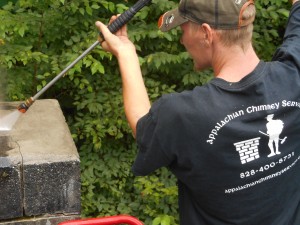 Are you one of the many homeowners neglecting their chimneys? While your chimney provides architectural interest to your home and creates ambience during the colder months, it is critical to note the primary function of your chimney: to safely carry toxic gases up and out of your home so that your air stays breathable. Much like a vent or window, your chimney has a serious job to do– and it requires special care to work efficiently.
Are you one of the many homeowners neglecting their chimneys? While your chimney provides architectural interest to your home and creates ambience during the colder months, it is critical to note the primary function of your chimney: to safely carry toxic gases up and out of your home so that your air stays breathable. Much like a vent or window, your chimney has a serious job to do– and it requires special care to work efficiently.
Incorporating a rigorous chimney care routine will help keep your chimney working properly and protect you against the dangers of chimney fires. In the United States, chimneys cause roughly 25,000 residential fires every year (see the statistics). A healthy and clean chimney is the best way to protect yourself, your family, and your home against accidental chimney fires. In this blog post, we will discuss how chimney maintenance can help you protect against a fire.
It seems implausible for your chimney to catch on fire– it is just a stack of bricks, right? While this is true, your chimney is much more complicated than a stack of bricks. Every time you burn a fire in your fireplace, soot, creosote (a flammable carbon byproduct), and other debris build up within the flue liner. Without regular cleaning, this debris can ignite and cause a devastating house fire. The best way to prevent chimney fires is to keep your chimney clean and stay on top of your annual chimney maintenance.
Your annual chimney maintenance starts with an inspection. National Fire Protection Association (NFPA) recommends that you have your chimney inspected once a year. Keep in mind that if you live in a cold region, chimney inspections may be in high demand- so schedule yours accordingly before the cold weather and wood-burning season sets in every fall and winter. A good rule of thumb is to schedule your inspection for around Halloween. You could also choose to schedule an inspection around the time your kids go back to school!
Your inspection will give you a clear picture of your chimney’s health and your next steps. After the inspection, it is time to schedule your chimney cleaning. Yes, you can clean your chimney yourself- but it is difficult for an untrained individual to acquire the right tools to clean their chimney to the recommended standards. Hiring a chimney sweep is often the best answer. These highly trained professionals know how to work indoors in a way that maintains the cleanliness of your home. This prevents unfortunate accidents that can pollute your indoor air and cause a mess. A chimney sweep carefully draws smoke out of your chimney and removes any creosote deposits from your system.
Here is a complete list of the ways that you can prevent chimney fires:
- Annual chimney inspection
- Professional chimney cleaning
- Burn seasoned wood in your fireplace
- Install a cap on your chimney
- Install a spark guard
You can enjoy your fireplace and stay safe at the same time. Simply be proactive about your chimney maintenance and take precautions to minimize your fire risk.
Feel free to call us for any of your chimney questions and/or to schedule a maintenance: (828) 400-8731
A Brief History of the Chimney Sweep
The art of sweeping chimneys began to emerge in the United Kingdom around the year 1200. A Chimney sweep is a person who inspects, cleans, maintains, and repairs chimneys. These chimneys could be attached to fireplaces, wood stoves, or cook stoves. Chimney sweeps were generally hired to clear ash and soot from chimneys for the homeowner. When the occupation began to become popular, the master chimney sweep would “hire” or take on an apprentice. These apprentices were generally as young as four years old. The young lads may be from a workhouse, which was a place similar to a shelter today, or bought from the young boy’s parents and trained. The young boys were chosen because of their small stature. They were trained to climb down into the hot flues to clean them. These flues were sometimes as small as nine inches square therefore, occasionally the boy would get wedged inside and suffocate or even burn to death. The chimney sweep profession has come a long way. Today, chimney sweeps are highly trained and professional. The tools are much more modern and the techniques are much safer and efficient. Gone are the days of actually climbing down the chimney flue to clean, most sweeps are performed from the bottom of the chimney instead.
Today, chimney sweeps are still used as ventilation systems for any fuel burning appliance or device still need to be maintained. The Master Chimney Sweep profession is more contemporary in many ways. Modern day chimney sweeps have a greater knowledge of the systems and dangers. The profession comes with more training in specific areas. In fact, most chimney sweeps are trained in areas such as how to identify and repair hazards that appear within the chimney and fireplace. They are also trained in topics of fundamental maintenance such as the removal of creosote and basic repairs in chimneys and dampers.
Although the chimney brush is still in use, many tools are more up to date. Instead of crawling into the flue as in the beginning of the chimney sweep era back in the 1200’s, today, tools such as vacuums, cameras and other chimney cleaning tools are utilized. Also, most chimney sweeps are performed from the bottom of the chimney instead of from the roof top. This action prevents the spread of dust and debris throughout the home.
The professionals at Appalachian Chimney Services are highly trained in the following areas: Chimney Inspections and Cleaning; Chimney Re-Lining; Rain Caps, Chase Covers and Shrouds; Flashing, Chimney Repair, Crown Repair and Waterproofing; and Stovepipe Replacement and Damper Replacement.
Chimney inspections and maintenances are very vital to the safety of you, your family, and your home and should never be a do-it-yourself task. A professional chimney sweep should always be called for any repairs or cleaning. Regular yearly inspections and residue removal should be performed to prevent costly damage from chimney fires that can quickly engulf your home.
Make it your New Year’s Resolution to begin a regular regime of inspections of your chimney. Call Appalachian Chimney Service for your appointment today- 828.400.8731






